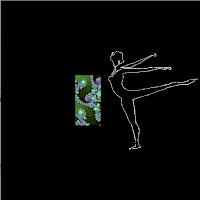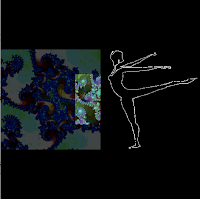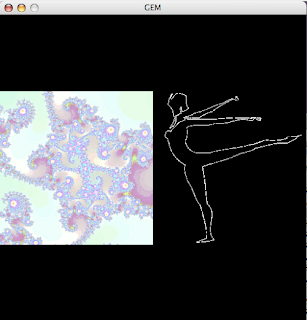Pd-Extended GEM Experiments



Pat, I was most interested in the GEM mode called Curves. It seemed to work much like a similar interface in Photoshop in that it was manipulated by dragging the curved line, but it has more flexibility. The first time I was trying to create a pale color palette in the fractal image (middle image). As I played with it more, I saw that not only could the color go very dark, but a box appeared within the image (right). The left most image here is the product of dragging the curve so that it was out of the graph area, which was something I was surprised it would do. The GEM environment seems to be a way to make the programming into a kind of flow chart which lays out some elements that are set/unchangeable and some that can be manipulated in a sort of branching design.
Comments
Post a Comment